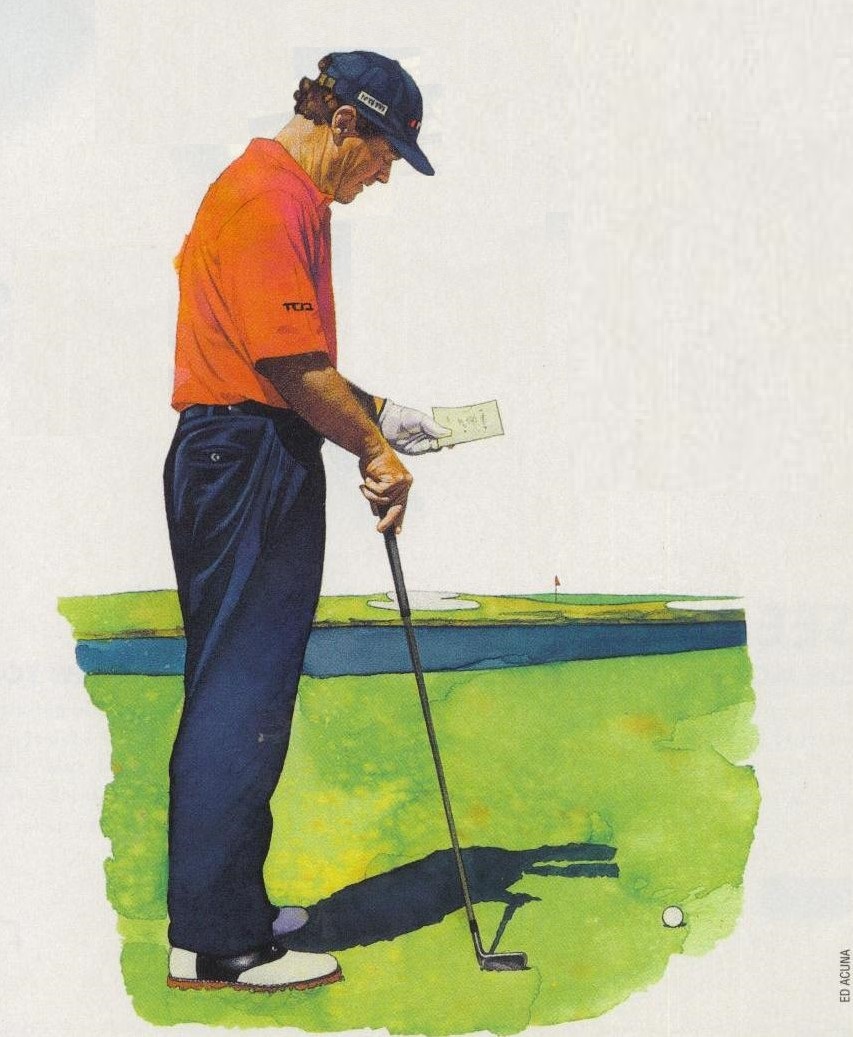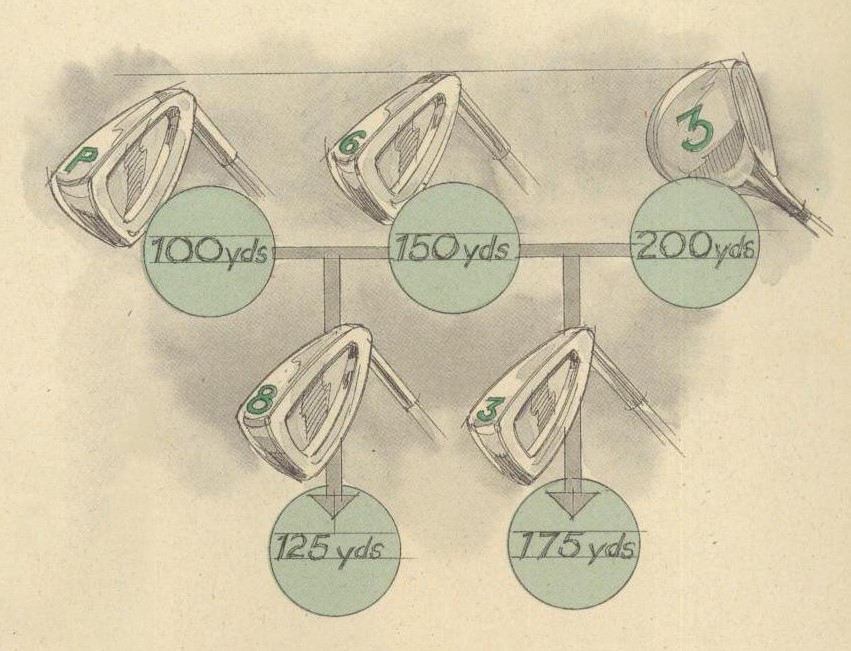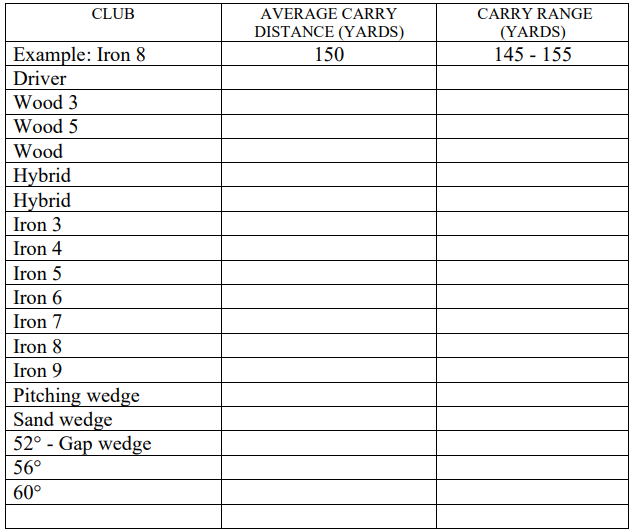
Talking in the 19th Hole
DRIVER. When asked about your distance with a particular club, your answer is almost always the total distance, the carry distance plus the distance the ball rolls after landing. This is a mistake because the total distance is not the number to use when selecting a club. The reason for not using the total distance is because the roll is not consistent. The roll is not consistent due to:
– Change from club to club. Higher loft clubs roll less than lower loft clubs.
– Changes from course to course depending on the firmness and smoothness of the greens.
– It changes from day to day in the same course depending on the conditions. Wet greens will not roll as much as dry, firm greens.
– Change from hole to hole. Tall, exposed greens become dry and firmer than low, sheltered greens.
– Changes even in the same hole throughout the day. In the morning, when the greens are cool from night watering and the dew will roll less than later in the day after warming up and drying out in the sun and wind.
On the other hand, many players tend to fall short of the target because they use smaller clubs than they should. They use iron 8 when they should use iron 7 or 6. Some reasons that explain this trend are:
– Because they do not make good contact with the ball, but even doing so, they fall short.
– Because players overrate their skills.
– Because players have the wrong idea about how far they can hit the ball. – Because they have seen on television the distance that the pros hit with a specific club, and they suppose that they must hit the same.
– Because of the ego factor. This means that if they see a player hit the 7 iron, they want to hit the 7 or even the 8, but the reality is that they should use the 6 iron.
– Because the player bases his distance on some of the best shots in his life and not on the average.
– Because players underestimate the effect of variations in playing conditions.
To calculate their distance, players do the club charting, which is to write on a board the carry distance for each club. Some ways to do it are:
– On the driving range, hit 10 balls with a club to a specific target. Carefully record the distance where each ball lands. Take an average and close it to a number that ends in 0 or 5, for example, 170 or 175. This way has the disadvantage that the balls are not in good condition, it is not perceived with precision where the balls land and the shots the most of the time they are from a mat.
– In the course, in practice round. From 100, 150, or 200 yardage markers or a marker on a sprinkler:
o Take some shots with an iron with which you achieve the approximate distance of the marker. Wait until you hit a solid shot, not a perfect one. Next, determine the exact distance where the ball landed, and that will be the carry distance for that club.
o Hit 10 balls with a specific club. Record the distance where each ball lands. Take the average, and that’s the carry distance for that club.
If you have a golf range finder, you can hit from anywhere on the hole.
This way has the advantage of doing it in real conditions and seeing where the ball lands.
– In pars 3 of the course. It is similar to the previous form, but now the shots are made from the different teeing areas. This way also has the advantage of seeing where the ball lands and leaves the ball mark.
– Knowing the clubhead’s speed in the swing allows you to see the distance you could achieve. Obtaining this data is easy with commercial devices designed for it.
Take these measurements in normal wind conditions and on flat holes.
Using the average carry distance as the base distance for each club will contribute to:
– Reach more greens.
– Stay closer to the hole.
– Have shorter putts.
– Hole more putts.
– Avoid problems.

When you recorded the distances of your 10 carry shots to get the average, you knew your maximum distance and minimum distance. It would be best if you did not play at the maximum distance because you require a perfect shot, it is more inconsistent, only a low percentage of shots will reach this distance, you will be short of the flagstick, you will be short of the green, and you do not leave anything in reserve in the tank.
Since you will rarely be in a shot at your exact carry distance, you need a base carry yardage that allows you to put in a little more yards when you need them. That is part of the essence of the feeling. That is one of the reasons the average carry distance is used in the distance board.
Based on your average carry distance, maximum distance, and minimum distance, you can determine a range for using a particular club. The maximum range will be less than your maximum distance but greater than your average distance. The lower one will be greater than your minimum distance but less than your average distance. For example, you hit the 8 iron with 150 yards of carry, but you can use it to reach the carry range of 145 to 155 yards.
It’s smart to know each club’s distance, but if you don’t, you should at least know which club you can reach 100, 150, and 200 yards. Many times, these are the yardages marked on the course. By knowing these 3 clubs, it is possible to estimate the clubs for the intermediate distances. For example, if you hit iron 6 at 150 yards and the pitching wedge at 100 yards, then at 125 yards, you could hit iron 8.

Exercise: make your club charting following one of the suggested ways.

